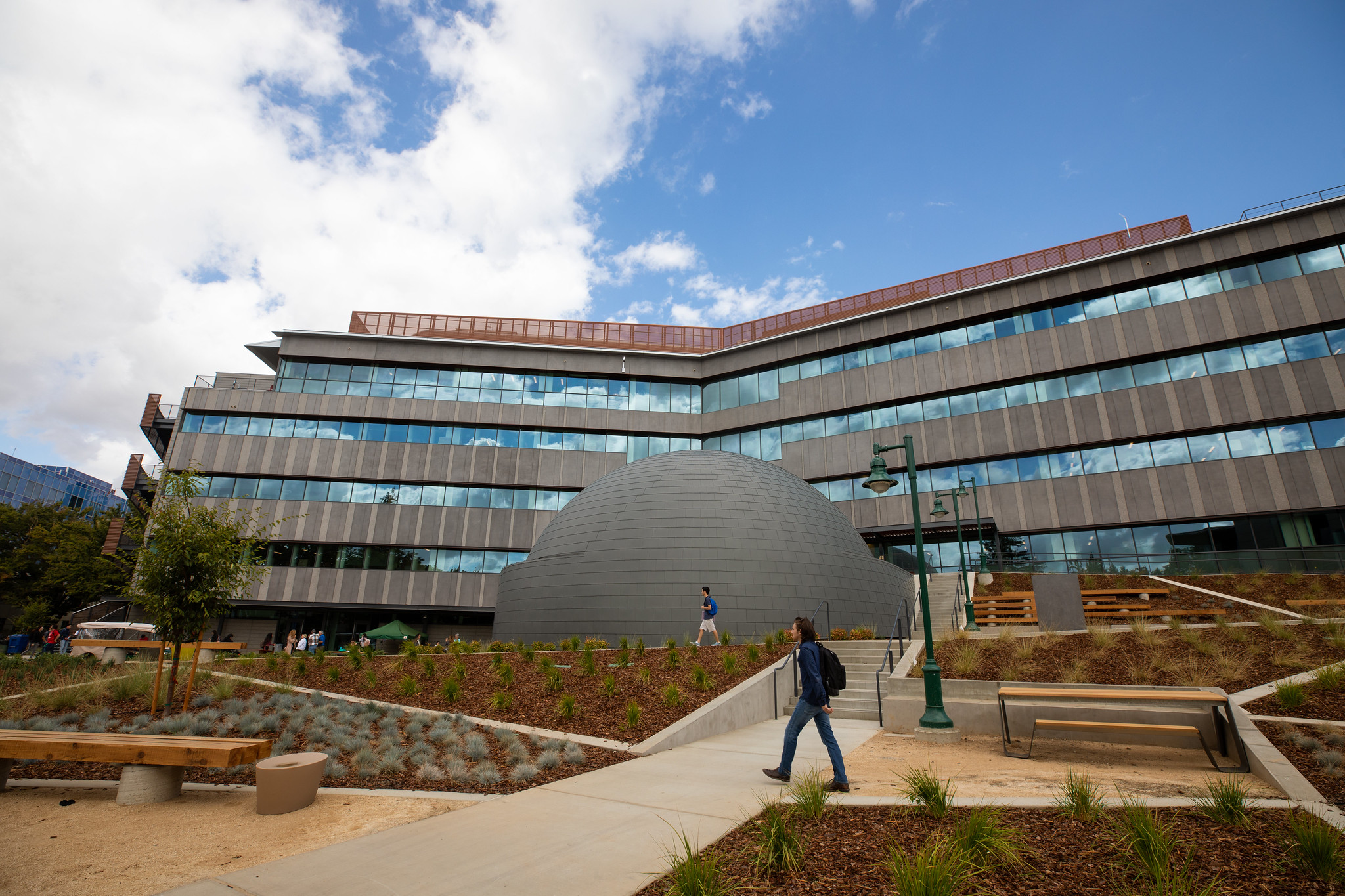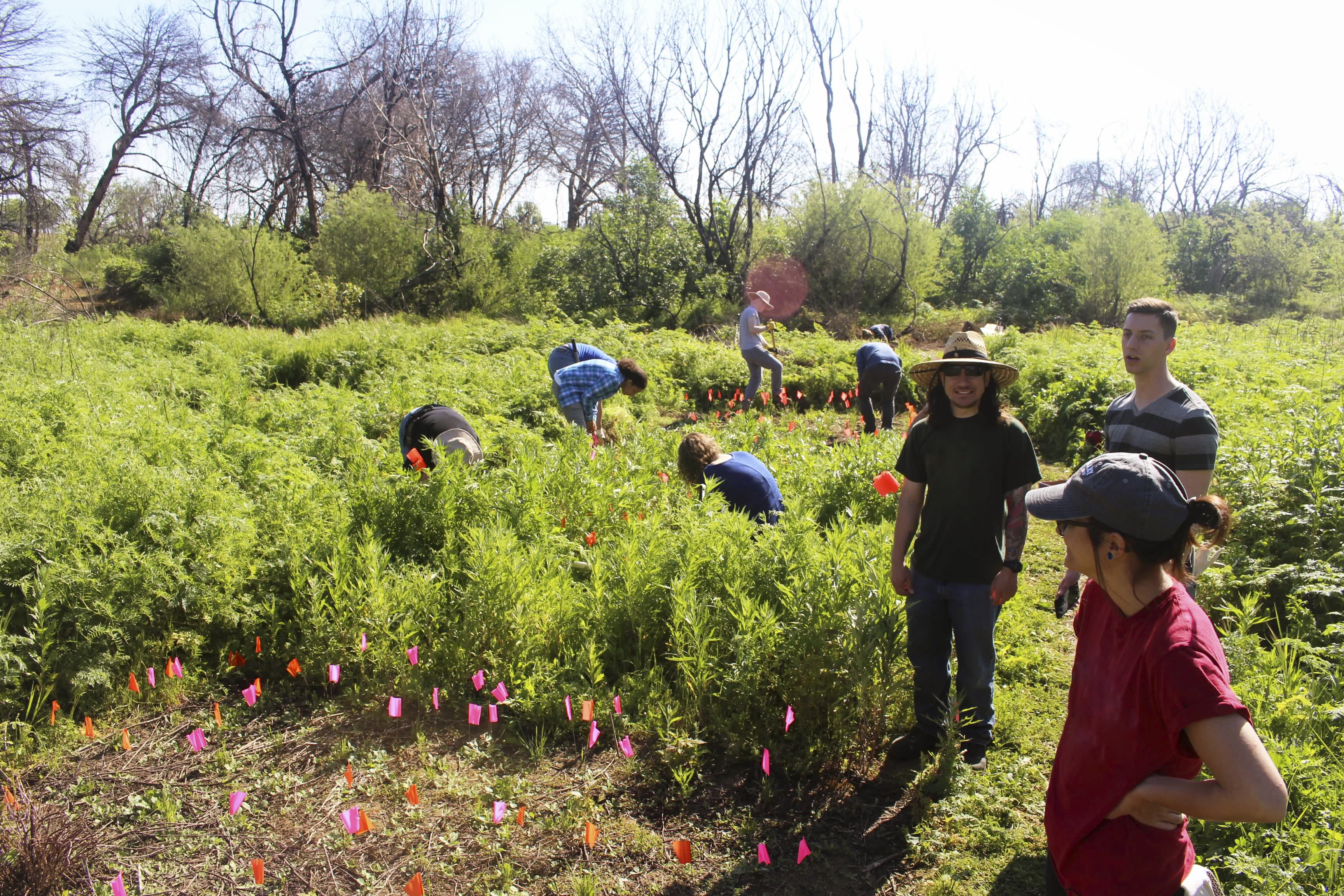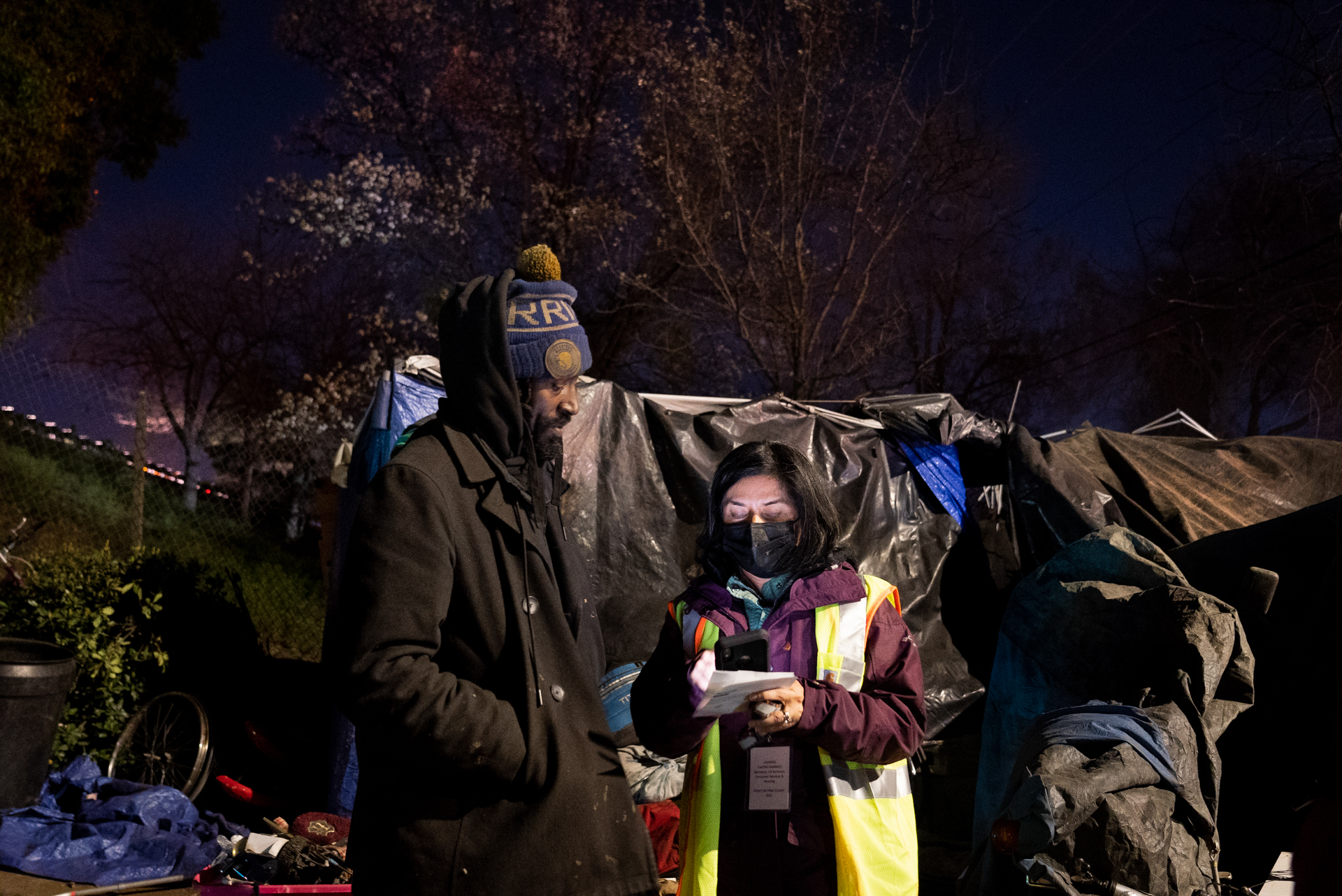Story Content
Showing of first deep space images from NASA’s James Webb Telescope draws nearly 1,000 visitors to Sac State Planetarium
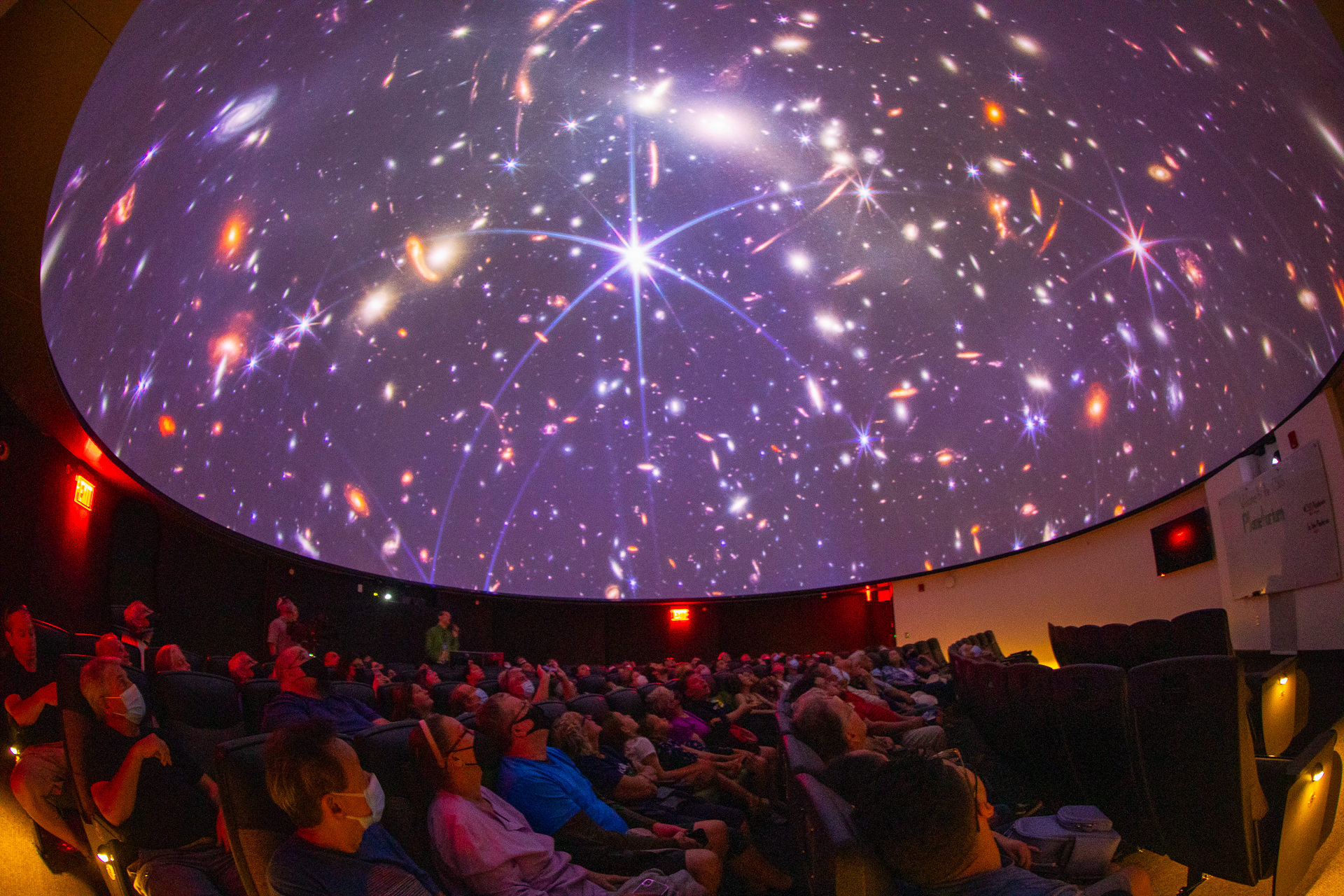
July 12, 2022
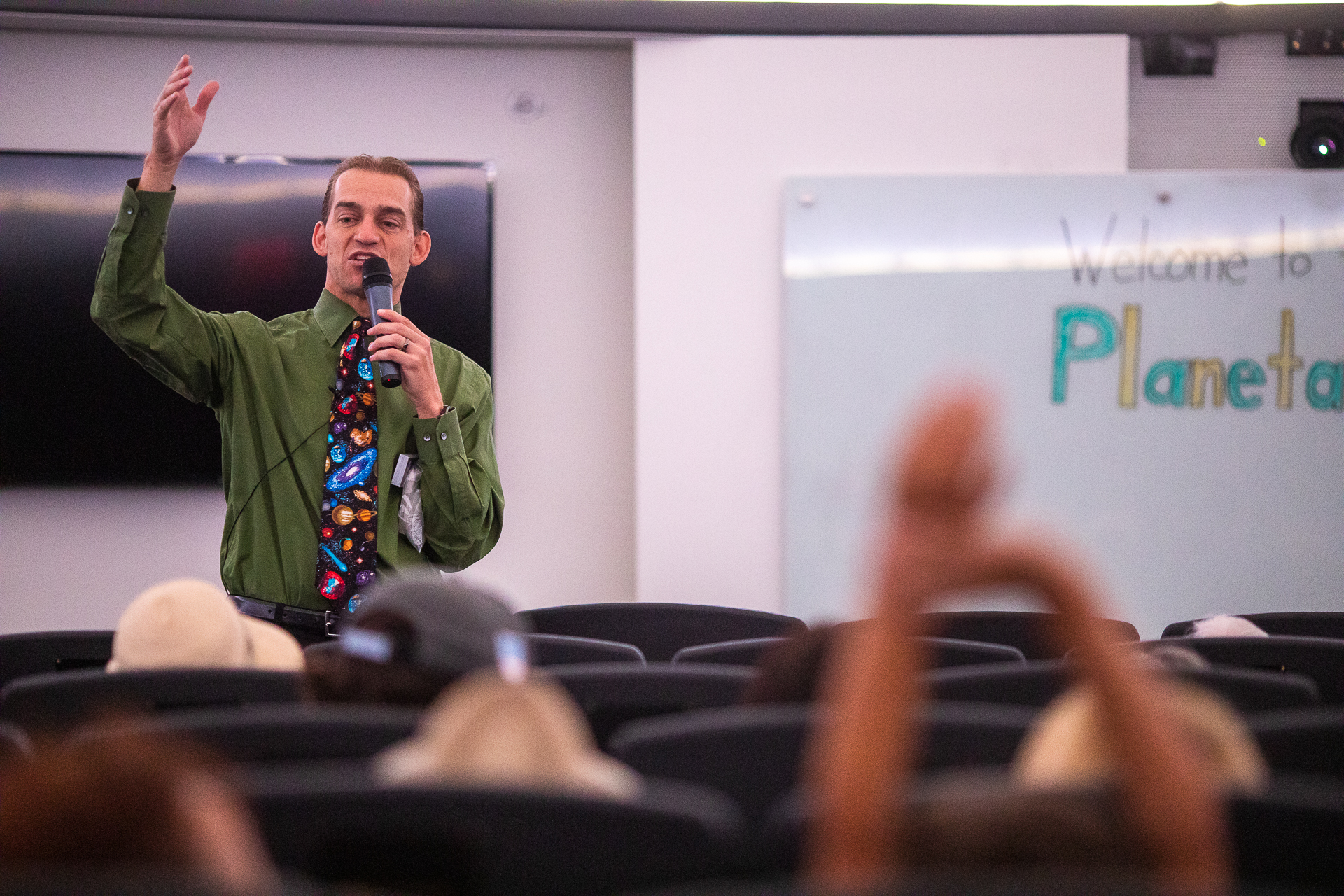
Planetarium Director Kyle Watters entertained visitors throughout the day with vivid descriptions of the first images from the James Webb Telescope, which NASA says will help astronomers understand more about the origins of the universe. (Sacramento State/Andrea Price)
Sacramento State’s Planetarium welcomed nearly 1,000 people into its domed space Tuesday, July 12, to view breathtaking new scenes of the cosmos captured by the James Webb Telescope.
The free open house attracted visitors of all ages, from school children on summer break to amateur astronomers, who gasped and cheered as Planetarium Director Kyle Watters unveiled, one by one, five images gathered by the largest space telescope ever built.
Watters extended the original 10 a.m.-3 p.m. schedule to accommodate visitors who lined up throughout the day at the Planetarium, part of the Ernest E. Tschannen Science Complex, hosting 11 showings that ultimately ended at about 5 p.m.
“I told my sons that there is new information coming back about the universe, and we would be able to come and see these pictures,” said Maria Lopez, who, along with her husband, Joel, brought sons Marco, Alejandro, and David to the Planetarium for the first time.
“As parents, we’re interested in having them learn as much about science as possible.”
The telescope, which launched on Christmas Day 2021, features a giant mirror 21 feet across. It orbits the sun 1 million miles outside the Earth’s orbit.
The instrument’s revolutionary technology will study every phase of cosmic history by collecting light from the first stars and galaxies formed after the Big Bang. Its infrared scope peers through dust and gas, allowing scientists to explore unprecedented territory in exquisite detail.
NASA is partnering with Sac State and other institutions across the country to show pictures captured by the telescope. The images will help astronomers understand more about objects they have never previously seen, and offer a glimpse into the origins of the universe.
The information that Webb collects ultimately could offer evidence of the first signs of life beyond Earth, Watters said.
In multiple sessions of about 25 minutes Tuesday, Watters entertained visitors with vivid descriptions of the photos projected above them on the planetarium’s 2,500-square-foot dome. He was animated and emotional as he discussed the significance of each image.
“Isn’t that amazing?” Watters asked as he projected a photo of the first look at Carina Nebula, a birthplace and graveyard for stars in the Milky Way galaxy. “This giant cloud of gas and dust is a place where stars are born, a stellar nursery if you will.”
He also showed images of Stephan’s Quintet, an impressive cluster of galaxies; the Southern Ring Nebula, featuring a dying star; and atmospheric readings of WASP-96b, a planet orbiting a distant star. On Monday, President Biden and NASA unveiled the fifth picture, an image of thousands of galaxies from a time much closer to the start of the universe.
“Our universe is truly enormous and wondrous,” Watters said.
The Webb telescope will continue to deliver new information for the next two decades, he said, “constantly revealing new things that make us go, ‘Wow!’ ”
Eleanor Cook, who took in the very first show of the day with her friends Dale Agan and Dan Osborn, came away impressed.
“I thought it was just wonderful, and I can’t believe we were the first to see these telescope images,” Cook said. The group had attempted to get tickets for other popular Planetarium shows, “but they always sold out,” she said.
Osborn said the images “looked like beautiful wallpaper, but when you hear about all of the details about what they represent, they were so meaningful and impressive. Incredible images, really enhanced by the explanations.”
Watters said he hopes to schedule more viewings soon.
***
Are you interested in supporting the Sacramento State Planetarium? Consider your giving options here.
In the news:
Media Resources
Faculty/Staff Resources
Looking for a Faculty Expert?
Contact University Communications
(916) 217-8366
communications@csus.edu
